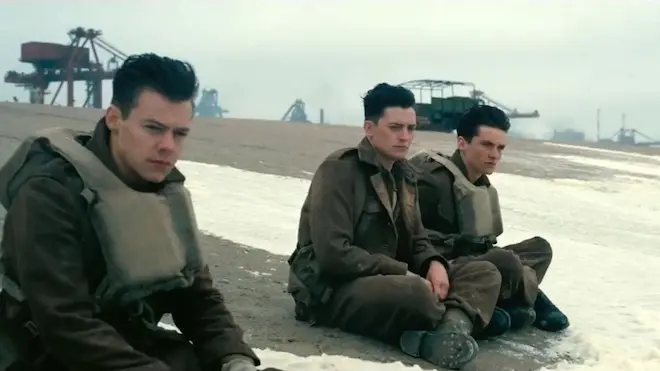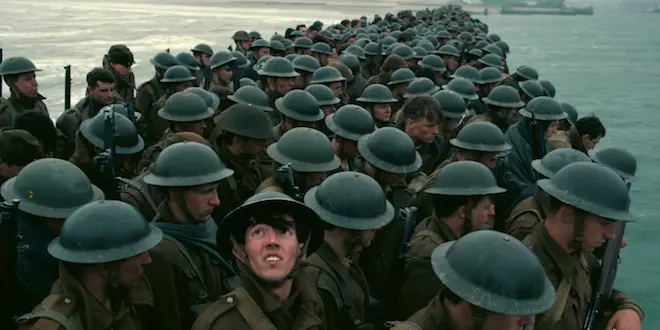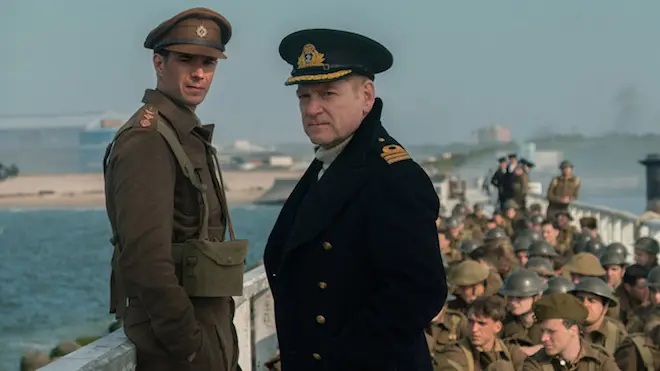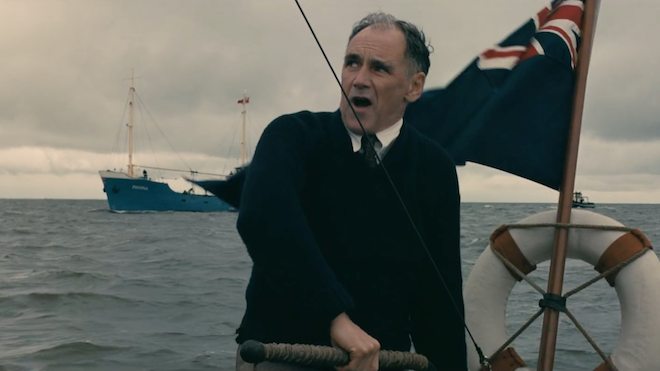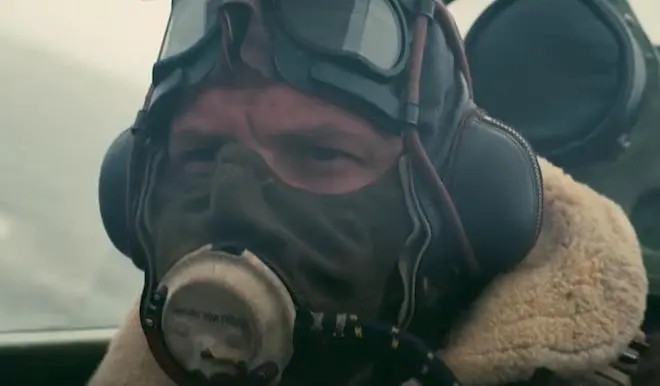‘Dunkirk’ Review: Nolan’s Wartime Masterpiece

I walked out of the theater after watching Christopher Nolan’s newest film, Dunkirk, and I sat in my car with the keys in the ignition. I didn’t start the engine. I just sat in the dark silence and decompressed. My mind was racing, my heart ached, and my blood pressure had to be running high. And still I sat there. For a good 10 minutes. Alone and in the dark. Dunkirk didn’t bombard me images of gore and the bloody horrors of war. I didn’t root for a good guy soldier to come and save the day, against insurmountable odds. No, Nolan had something else in store for his audience here. He showed us a different aspect of war: the absolute chaos and disorientation that comes from trying to kill another man because of the flag he flies. And Nolan did so like an absolute master.
Dunkirk is the story of 400,000 British and French troops stuck on the beach in a small town in France in late May of 1940. The Germans had pushed them to the very brink, and were picking the soldiers off with dive bomb air raids and sniper fire from the nearby buildings. The troops, mostly boys and young men, waited for almost two weeks for boats to come and save them, but Britain was unable reallocate the ships. The ships that did come were quickly downed by U-boats or were bombed and sunk from the air. It was an absolutely hopeless scenario.
Christopher Nolan, who writes and directs here, tells the story of the soldiers of the Battle of Dunkirk in a very non-linear, unconventional way, sending the audience into three different storylines, each following a different player or players, and each starting from a different point in time, until finally converging in the third act. By structuring his narrative this way, Nolan creates a sense of chaos, as the audience isn’t sure what is going on and when it is happening. Kind of the like the heat of a battle. And each of the three story threads contain enough scenes of hopelessness and despair to fill an entire film. Nolan beats us over the head with it, but never to excess. Only to create an underlying feeling that there is no hope, even if you know how the story turns out. This sense of chaos and hopelessness and despair seeps off the screen and the audience feels it. Truly feels it.
Nolan further punctuates this with some ear-shattering, physically jolting sound effects of gun shots, the scream of planes diving rapidly, and explosions. Especially on an IMAX screen with that superior sound system. And to make matters worse, Hans Zimmer’s near-perfect score finishes the pulsing, disorientating production by constantly — and I mean constantly — thumping, buzzing, trumpeting, and orchestrating sounds and music in a tapestry of audible insanity the likes of which I have never experienced in a feature film before. The scoring doesn’t stop until near the very end, when it abruptly stops, as one last revelation that Nolan and his production had been working to keep us all dizzy under the spell of not just a battle, a gunfight, or an air raid, but of the totality of war itself. It was mesmerizing.
War films usually have good guys and bad guys. There’s usually some gore and lots of violence, and oftentimes, some silly jingoistic theme that runs throughout. Dunkirk is different. Dunkirk shows the dirty secret of war to be what it is: a jumbled mess of human beings killing each other at the command of others for reasons that don’t always make sense, and the truly human moments that seem to rise up from the chaos that separates humanity from our more base nature.
The script for Dunkirk is sparse on words, as the action unfolds like a tapestry being painted before our eyes. Whether we are following young Tommy (Fionn Whitehead), as he and a fellow soldier (Damien Bonnard) do whatever they can to get on a boat to cross the channel back to England; or the RAF pilot Ferrier (Tom Hardy), who is flying a cover mission with his squad mates, trying to give what little air support the British forces could muster; or lastly the story of Mr. Dawson (Mark Rylance), who takes his family boat and his sons George (Barry Keoghan) and Peter (Tom Glynn-Carney), and joins a group of civilian boats that are crossing the channel to bring their boys back home, the script shows, rather than tells the action, with small clusters of lines just used to set up or give brief exposition. It’s one of the strongest filmed scripts I’ve ever seen, as Nolan brings a level of art to war that many other directors have tried and failed.
Apart from the incredible writing and directing, the actors portraying these roles are elevating the story higher and higher with their collected talent. And without many lines to help them craft characters, actors like Cillian Murphy, James D’Arcy, and Kenneth Branagh, and even Harry Styles — yes, Harry Styles — absolutely glow in these roles. Tom Hardy, who spends the majority of the film behind his flight mask in the cockpit of his Spitfire, emotes and conveys so much solely with his eyes. One scene featured the character making a decision, with the camera essentially focused one just one eye clearly through his goggles, and Hardy’s performance came through as if under a followspot on a stage in the West End. I still picked up on what he was thinking, the decision he was making — all by staring at his eye and his eyebrow. A circumference of just a few inches and he still sold it. Marvelous. Simply and absolutely marvelous.
Hardy is no stranger to having his face covered in a Christopher Nolan film, after his turn as Bane in 2012’s The Dark Knight Rises, but in Dunkirk, he flexes acting muscles I’ve never seen from him before, and it is astounding to watch.
Dunkirk is easily Christopher Nolan’s best film. For fans who have followed him through his career, they will see snippets of just about everything he has done before in some form or another at play here. It is as if his entire filmmaking past has been prologue to this film. And I say this as a critic who didn’t care much for The Dark Knight Rises and Interstellar. To say that he has course corrected himself is an understatement, as not only is Dunkirk the best film I’ve seen all year, it is also the best war film I have ever seen. I don’t type these words lightly. I have never walked out of a film screening and had to sit in my car for a period to collect my thoughts before I could even drive home.
I was affected by Dunkirk. Deeply and on many levels. It is a film that will haunt me for years to come, as no film has ever hit the emotional strings that this one did, and in the way that it did. I count myself lucky that I have never experienced the chaotic hopelessness of a war zone, or the fear and anxiety of a gun battle, and I hope I never have to. But Dunkirk has shown me, in one form or another, that it is a feeling and a scenario that I would not like. And I have an even deeper respect for those who have gone through it and lived. And maybe that was Nolan’s final lesson in his masterpiece war film. If so, lesson learned.
Dunkirk is rated PG-13 and is in theaters on July 21. The is a 70mm print option, as well as an IMAX version, shot on IMAX cameras. The IMAX experience is highly recommended.
TheHDRoom may be paid a small commission for any services or products ordered through select links on this page.
